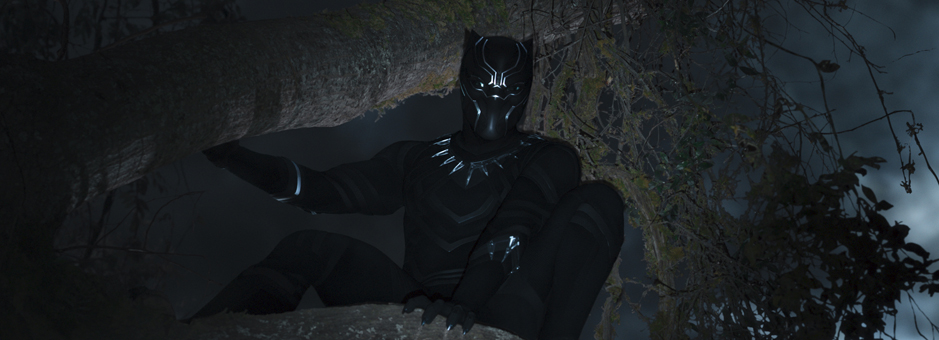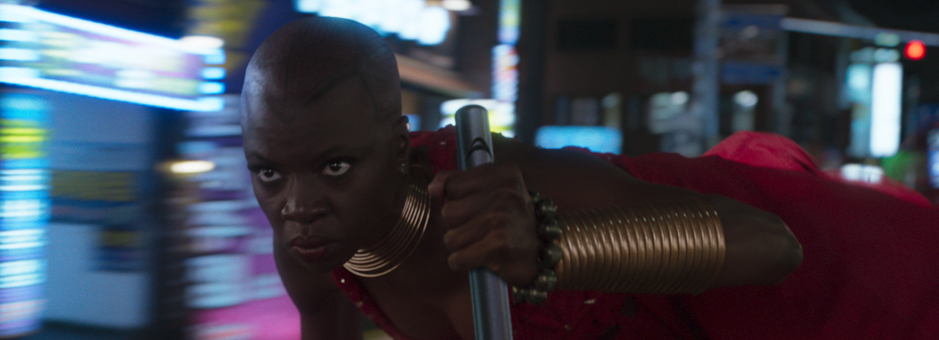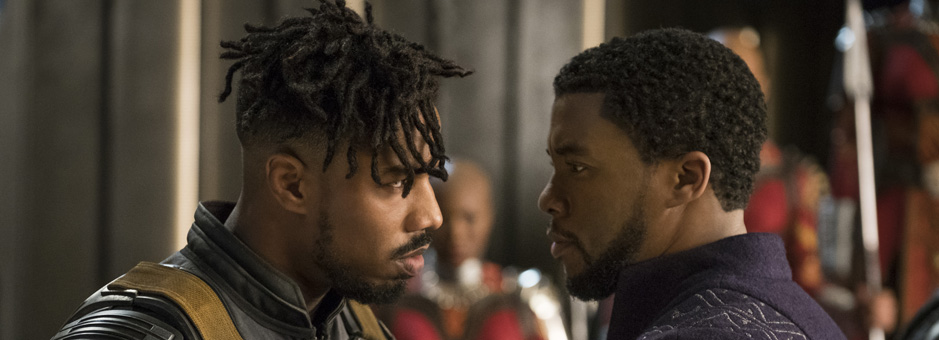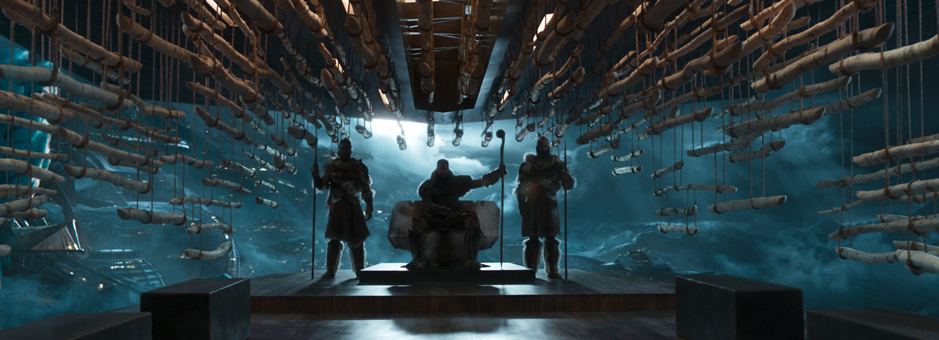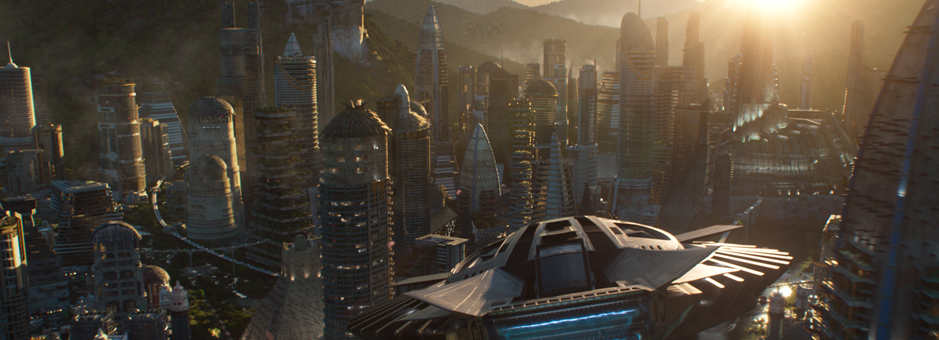Case Studies
Latest Marvel Studios’ epic graded on Baselight
Technicolor colourist Maxine Gervais discusses her latest project, Marvel Studios’ Black Panther.
One of 2018’s most talked about, and most appreciated, movies, Marvel Studios’ Black Panther is the latest from the Marvel stable – and a huge box office success. T’Challa, first encountered in Captain America: Civil War, returns home to take the throne of the fantastical nation of Wakanda, an isolated yet technologically advanced country in Africa.
Given that the story features the first predominant black Marvel Super Hero and sees a majority black cast, it is fitting that it was visualised by African-American director Ryan Coogler. It also features a number of strong female characters, both on screen and behind the camera: the movie was shot by Oscar-nominated cinematographer Rachel Morrison, while Victoria Alonso was executive producer and closely involved in the post-production.
Women were strongly represented throughout the crew, with the finishing team led by colourist Maxine Gervais of Technicolor Los Angeles; to handle the huge workload, her team utilised a network of six or more Baselight colour grading workstations simultaneously. Gervais worked particularly closely with cinematographer Morrison to add her distinctive touch to the movie.
“We knew that this was a movie with big themes and a strong story – we knew it was going to be epic,” Gervais said. “Approaching it was exciting: it was not an established franchise but a completely new departure, so it gave us all more creative freedom.”
What makes it fascinating, and visually exciting, is that the film moves between Oakland, California and a secretive, futuristic African nation, a world the audience has never experienced.
“We wanted the film and photography to feel real, unlike most superhero movies,” said Morrison. “We wanted to highlight the beauty of Africa, so we looked to films like Baraka and Samsara, the TV series Planet Earth, even to The Godfather and The Dark Knight as visual references. And like all of our work, we were hoping for a subjectivity and clear point of view.”
Marvel Studios inevitably takes a close interest in all its productions, so there was positive guidance from the production team. The major viewing sessions to consider the grade were attended by as many as 20 people – a huge challenge for the colourist to interpret and implement so many inputs. But Maxine Gervais saw it as an opportunity to collaborate, to share ideas and to challenge each other.
Inevitably, Maxine built a close working relationship with cinematographer Morrison. “Rachel is great,” said Gervais. “We got on really well and had similar response to the overall feel of the movie. She is clear about what she is after and has a great eye for contrast nuances. We were both looking for a strong, rich image. I think we achieved that very well.”
“Maxine was incredibly collaborative and takes a real pride in her work,” said Morrison. “We were very much on the same page, fighting hard to maintain contrast throughout.”
Gervais needed to be able to trust that she could present solutions to the requests from producers and the director, so the key finishing tool was the Baselight X system, the most powerful workstation in FilmLight’s colour grading range, running version 5.0 software. During the project the FilmLight support team worked closely with Maxine.
“There was a great amount of effort from FilmLight to make this a very smooth and easy ride, because it was a big movie with huge VFX and a short delivery time,” Gervais said.
SHED LA also utilised FilmLight’s Daylight tool to grade and deliver all the dailies, allowing the DoP and director to establish looks and visualise what they had shot on location.
An inevitable challenge in such a fantastical story is that there has to be huge reliance on VFX – there are more than 2500 VFX shots in Black Panther. So the workflow had to be built around not just integrating the VFX pipeline, but ensuring that the director was seeing something close to the finished grade at all times.
The project drove extensions to Baselight’s Categories functionality, to allow users to flag and track all the VFX shots and their state of completion. In practice, this meant that the director, DoP and production team attending grading sessions could see at a glance, using colour-coded markers on the client monitor, which VFX shots were temporary and which were final. This was absolutely essential to keeping the process on track.
“We were very well aware that directors get used to the ‘look’ during finishing, so we wanted to make sure Ryan was getting attached to the right pictures,” Gervais said.
One of the functions used on the production was the Baselight shots view, so everyone could more easily navigate the mammoth number of shots and see at a glance how many shots were actually finalised.
Gervais also worked closely with VFX Supervisor Geoffrey Baumann to make sure that the CDL matched what they saw in the VFX reviews. “Sometimes, we used the CDL as a starting point for the grade and sometimes we would blend it off by 50%,” explained Gervais. “Other times, we would drop it altogether and use it only as reference. It all depended on the complexity of the scene.”
The movie’s varied settings posed real challenges for the grade. “Probably the most demanding was the jungle scene,” she said. “It was set at night, so to keep all the detail we need to see, and to make it feel organic, I ended up grading in multiple levels.
“On Black Panther I used way more composite grading than I have ever done before, blending many layers to achieve the final look.”
Cinematographer Morrison agreed. “The jungle scene was the biggest challenge. It was shot interior on a sound stage and had a bit of a ‘set’ feel to it. We knocked everything down and then really worked to amplify the contrast in the background.”
Timescales were foreshortened and the producers set a premiere for the end of January.
“I was involved in the project for a little over two months, but when you get to the finish line on a movie like this there are a lot of VFX shots to be dropped in,” explained Gervais. “The regular standard 2D had to be wrapped around 24 January, but the 3D versions had already started as I was finishing 2D, so that was challenging too.”
With such a VFX-heavy film, there was obviously a lot of rotoscoping and tracking to be done. Gervais called on the team to help. She worked with her assistant colourist, Jeff Pantaleo, to rotoscope a lot of the shots; they tried to avoid using too many mattes so it would simplify other deliveries like 3D, but they still ended up with a huge number of layers and shapes.
“We had a dedicated team just to offset all the shapes for 3D,” Gervais continued. “Luckily, Baselight 5.0 includes tools to speed up the way shapes are translated between 2D and 3D, further boosting efficiency in this aspect.”
“Even when it comes to deliverables, the tasks mount up,” she added. “There are versions for laser projectors as well as standard digital cinema. It is also available in IMAX, and of course there are HD versions. It adds up to very many variations – and each one needs a trim.”
Colourist Maxine Gervais loved her first Marvel movie, and all the challenges it brought. “It was an amazing experience to work with all these people,” she said. “It really made me step up my game – and I know Baselight a whole lot better than I did before.
“I had to push the technology and myself to find ways to make it work. But I think it turned out pretty good.”
“We knew that this was a movie with big themes and a strong story – we knew it was going to be epic.
Approaching it was exciting: it was not an established franchise but a completely new departure, so it gave us all more creative freedom.”
Download
Black Panther Case Study (PDF)




